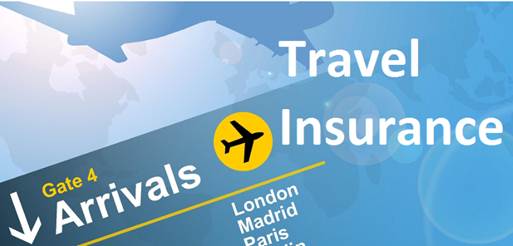This is a feature about insurance. We know – dull, right? But
the smartest thing you do today could be reading these two pages…
“When it comes to insurance, we just assume the worst won’t
happen,” says financial expert Jasmine Birtles of Moneymagpie.com. “And when
you’re struggling to pay other bills, ‘extra’ costs like insurance fall to the
bottom of the list.” But way more painful than paying for insurance is shelling
out for lost laptops, stolen phones and even jaw-dropping medical bills when
you realize you’re not covered abroad. So read on for the risk-free ways to
protect you and your stuff…

20%+ proportion of
women who’ve had their handbag stolen
… On holiday

Hananh Swindells, 20, from Brighton, is very glad she took
out travel insurance before heading to India and Cambodia last year, where she
volunteered at an orphanage. Towards the end of her stay, she was struck down with
severe stomach pains and, after days in agony, she was eventually rushed to
hospital where she had tests to find out the cause. “It was incredibly scary,”
says Hannah. “I was all alone in a foreign hospital and had no idea what was
wrong. I just wanted to be at home.”
Hannah was discharged after four days and flown home. The
cost of the medical care and changed flight came to over $4,500, which was met
by her insurer, Direct Line. “Its nurses even contacted me while I was in
hospital to reassure me”, says Hannah, who was diagnosed with gastroenteritis
and parasitic bugs in her bowel. “I thought insurance companies were the bad
guys, but they took care of everything for me”
“Travel insurance is essential,” says Paul Davies at Which?
“People imagine it’ll be expensive, but you can insure a European holiday for
as little as $15” Paul says more people are taking out multi-trip insurance,
which covers you for a year. It costs about $45 for Europe or $68 worldwide. Be
warned, though – some activities like winter sports and jet-skiing probably
aren’t included.
Check you haven’t got overlapping policies: holiday baggage,
for example, might be covered by your home-contents insurance. Also, be aware
that in Europe, a free European Health Insurance Card (EHIC, from Europeanhealth.org.uk)
should cover basic medical expenses. But you may opt for extra cover in case
your flight’s cancelled, your bags are stolen or you need to be flown home in
an emergency.
… At home
Two in five 25-34-year-olds don’t have their home contents
insured. One of these was Cosmo’s Entertainment Director Lizzi Hosking. Her and
her fiancé Hugo’s home in London was burgled in February. The thieves took two
laptops, Lizzi’s BlackBerry, a digital photo frame and a Nintendo DS. “The
upstairs was ransacked,” says Lizzi. “I’d always had insurance, but with the
cost of everything else rising, we decided to let the policy lapse a year ago.”
Insurance might not have been able to bring back the
precious photos on Lizzi’s laptop, but it would have saved her the $3000 cost
of replacing the stolen items. “We’re definitely not going without insurance
again,” she says.
Policies can include clothes, shoes, furniture, even what’s
in your fridge, but you should mention specific valuables – such as jewellery,
laptops or bikes – in case they need extra cover.
If you live with mates, consider getting a shared policy
like Endsleigh’s House Sharer cover. It means you don’t have to keep all your
possessions in your room, which might be the case if you have individual insurance.
Also, consider specialist gadget insurance, either instead
of or as well as a basic contents policy. “People are focusing on the few items
that are really important to them, like their phone or laptop,” says
Endsleigh’s Sarah Newell.
… Your handbag

content-insurance
Home
Julia Stent, 27, was lucky her contents insurance kicked in
when her bag was stolen from the back of her chair during a work event in
London. “I was so angry with myself for letting my guard down,” she says. “For
me, my insurance was money very well spent.” She pays $36 a month for
home-contents insurance, out-of-home cover for items like her bag (phew) and
accidental damage (eg, spilling juice or her laptop – it happened!). “I’d
checked my things were covered outside my flat, and probably paid a bit extra
for that – but it was worth it. I replaced everything.”
A key item in most women’s handbags is their phone, and if
yours is an expensive smartphone, insurance could save you a packet –
especially if you’re savvy about you do it. Which? Has found that getting
insurance through your phone provider is the costliest option – often around
$18 a month for a smartphone. “The cheapest way could be through home-contents
insurance,” says Paul. Check if it’s included, whether you have to list it as a
specific item, and if you’re covered for both accidental damage and taking it
outside your house – which clearly you’re going to. It’s also worth finding out
the excess (how much you’d have to pay if you made a claim).
Jasmine also suggests checking out “paid for” bank accounts,
where you pay a free each month, typically around $15 – the perks often include
phone insurance. Be warned: some insurers will only replace a mobile phone if
you report loss or damage within 24 hours.